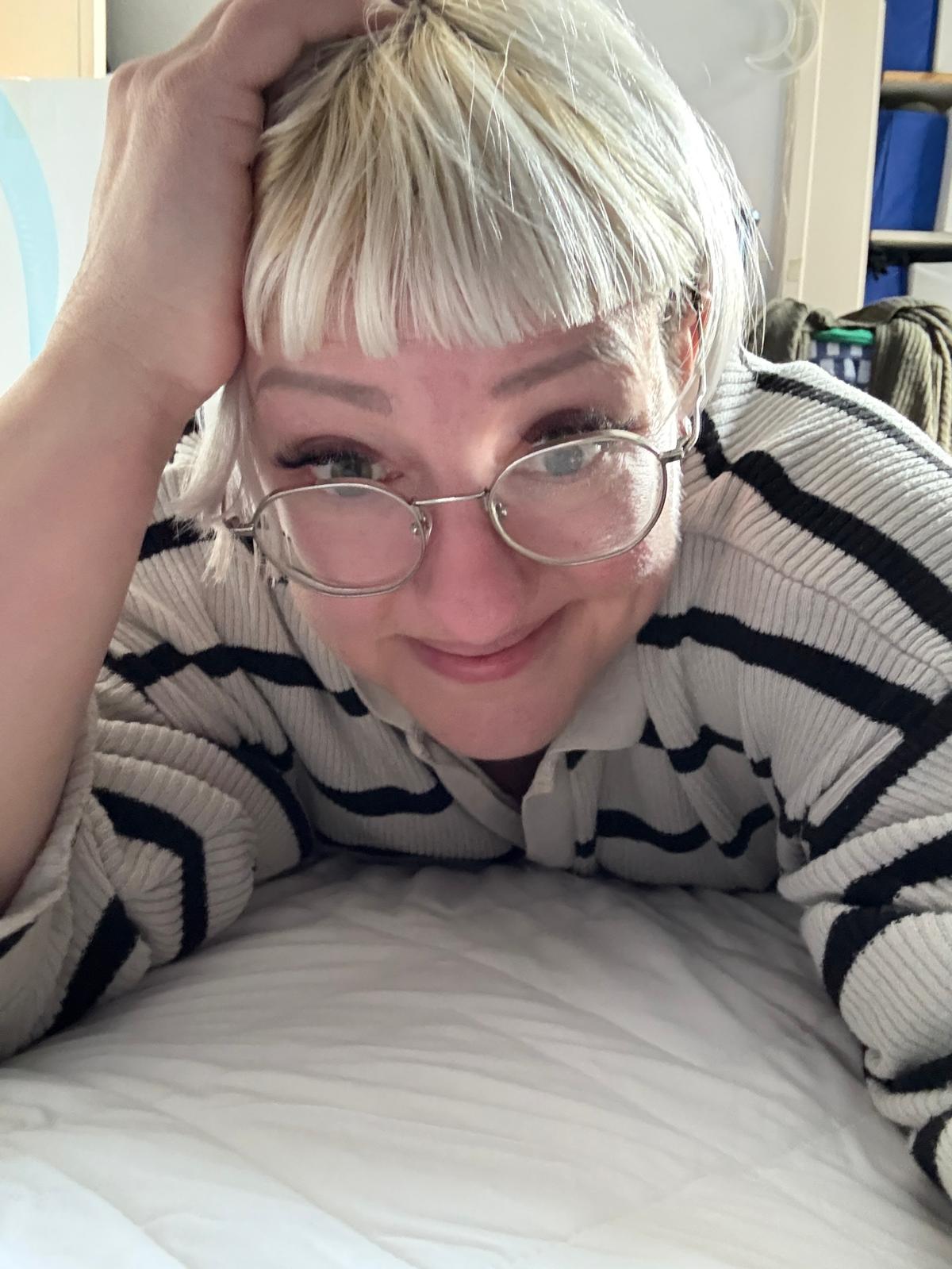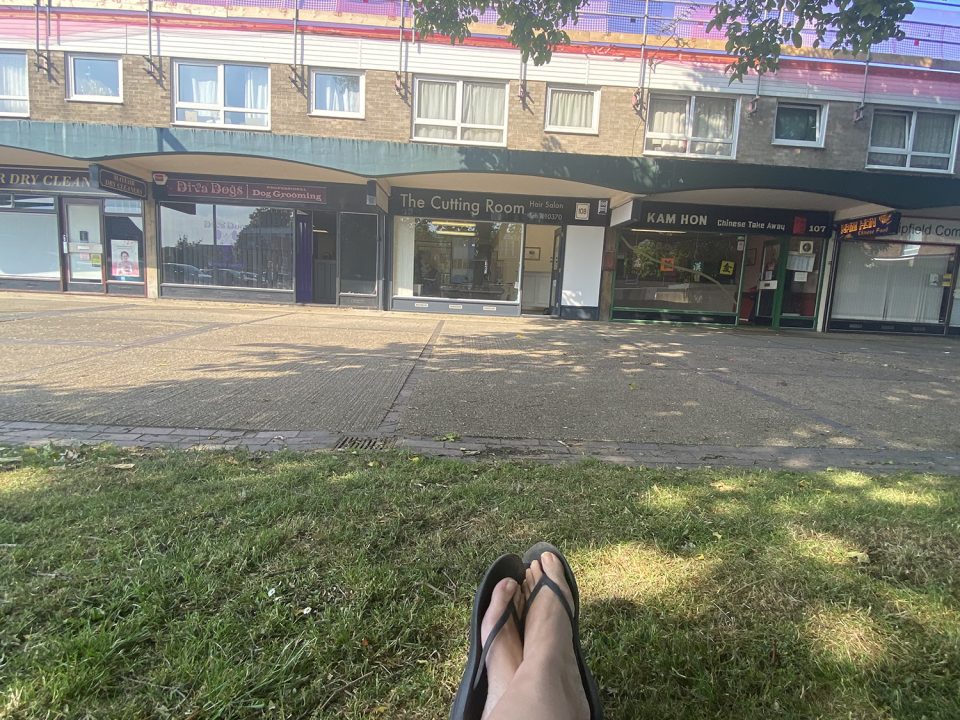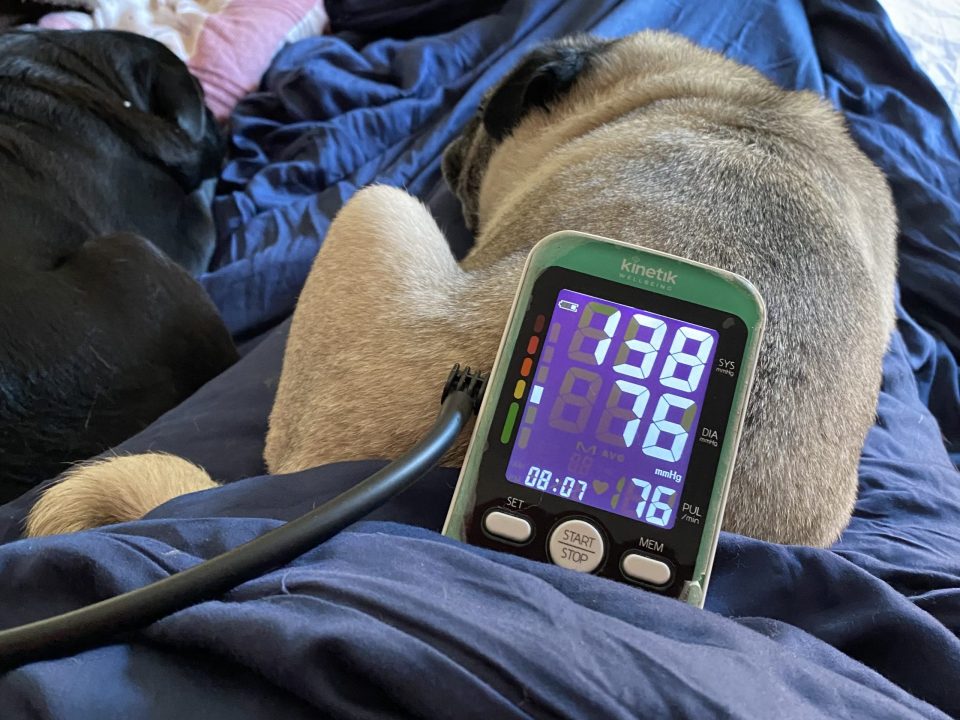Big Band in a Big Park
June 28, 2010My Favourite Flowers
June 30, 2010Ok. So. Before we start we should all agree that technically VINTAGE means this.
 by Ash Berlin
by Ash Berlin
But I’m not here to talk about wine. I LIKE wine. But it’s just not the same as a pretty frock.
To me, vintage, as applied to clothing, is simply a term used to clarify the age of a garment. Just as antique should imply that something is over 100 years old, to me vintage means something is over 20 years old. It is no indicator of quality, desirability or price, that is something to be decided by the individual collector or retailer. Vintage isn’t an arbiter of taste and good quality. It’s just a word.
We’ve surely all all noticed a change in the perception of vintage over the last 10 years. What used to be, “ugh, second hand”, slowly became desirable. An indicator of individual taste, creativity and individuality. Starting with art students in granny knits and ending in Hollywood movie stars in vintage couture.
“Oh this old thing? It’s vintage”
With this increase in desirability came an increase in price. But that’s ok. When something is more desirable it costs more. Supply and demand and all that. It’s the capitalist way.
But recently I’ve noticed another change, and it comes in 2 parts.
Part One
The Vintage Snobs.
Modern Vintage Girl had a little rant about this recently.
If you hear any of these then you’re dealing with a vintage snob:
- Only designer vintage is worth looking at (as long as you don’t pay over the odds for it what’s wrong with High Street or handmade vintage?)
- If it’s from the 80s it can’t be vintage (generally the person saying this will be over 30 and thus remember the 80s)
- Oh I only ever wear vintage. Modern clothes just can’t compare to the quality (some of them can. You just can’t afford them)
Generally the vintage snob will be slightly older. When they started wearing vintage they were wearing the clothes discarded by their Mothers and Grandmothers. The thought that today’s younger generation are wearing clothes discarded by THEM. Well, that doesn’t bear thinking about. I have seen people define anything pre 1960s as vintage, and pre 1920s as Antique. Presumably in 2050 we will be defining all clothes made in the last 100 years as contemporary, and that’s just going to get confusing. Quite apart from being a terrible business move for vintage sellers who will find it significantly harder to find stock.
Vintage doesn’t define the quality of clothes.
In 1930 people were just as capable of producing shoddily made dresses from poor fabrics as we are today, they were just made by hand in their own homes rather than on sewing machines in India.
The Vintage Snob has come to believe their own hype, that the wearing of vintage clothing bestows an automatic veneer of creativity and difference. Yes, you are unlikely to bump into someone in the same frock if you buy vintage, however, the increasing availability of high quality vintage at (sometimes very) high quality prices means that a person with a good disposable income can buy themselves a little piece of that look without having to put in a great deal of effort. The dealer did it all for you. You didn’t dig that 50s day dress out of a pile of dirty sheets, lovingly restore it to it’s former glory and tailor it to fit you like a glove. You bought it off a mannequin, for £200, just like on the High Street.
Part Two
The Vintage Nob
Just because it rhymes with snob. See.
The following are indicators of the Vintage Nob
- I got this gawgeous vintage skirt at New Look. (No, you didn’t)
- Peaches Geldoff wore a vintage dress from Dolce & Gabbana’s Autumn Winter 2005 collection (no, that’s just 5 years old. Not vintage.)
- I love vintage clothes! (what, all of them? Every piece of clothing made between 1910 and 1990 you love?)
Ok, so the last ones a bit mean. You can say that without being a Vintage Nob, but this group are the ones that have been sold the “it’s vintage” line by High Street stores desperate to cash in on the increasingly fashionable “vintage look”
Vintage as an adjective like this means nothing to me. Something could be a 50s style dress, or an 80s style dress, but just calling it vintage style is nonsensical. In a High Street store it can mean anything from a whimsical floral print to a faded and worn band T Shirt.
Here are a few items that can be found by searching the word “vintage” in some popular High Street stores websites.
Equally as nonsensical is the belief that anything not from a current collection instantly becomes vintage. If you want to end up in the same position as Reese Witherspoon in “vintage” Chanel at the 2006 Golden Globes then by all means hang on to that idea, but you’re only fooling yourself. Or maybe being fooled by labels that think they’ve found a cunning way of getting rid of last seasons left over stock. It’s not an end of season sale, it’s vintage, it’s MORE expensive.
Buying clothes should be fun, fashion should be fun. But the people who are buying “vintage” from H&M are missing the half the fun of getting the look you want from unlikely items found in unlikely places. And while we’re at it
EBAY SELLERS ALERT: IF IT’S NOT VINTAGE, PUT IT IN THE WOMEN’S CLOTHING SECTION, NOT THE VINTAGE SECTION.
ALSO “50’S STYLE” 80’S FROCKS BELONG IN THE 80’S SECTION, NOT THE 50’S SECTION.
Thanks.
I wear vintage clothes because before I bought this dress I had never in my life owned a fitted dress that didn’t pull on my hips and go baggy round my waist.
I wear vintage because I can find better quality second hand and vintage clothes than I would ever be able to afford new.
I wear vintage because I like the visual aesthetic of the 30s, 40s and 50s, but I don’t care whether the dress I am wearing is a vintage repro made last week, a “40s style” dress made in the 80s or a vintage original.
I care about quality and fit. I love the feeling that someone else loved this dress before, and I get to wonder how it got to the place I found it. But then sometimes, just sometimes, I only care that it looks nice.






41 Comments
Oh I have to agree about the ’50s style’ dresses. It is a little annoying and makes finding what you want harder than it has to be.
Very interesting piece, particuarly in relation to how old the clothes have to be to be ‘vintage’.
Florrie x
Something to ponder on:
This year (2010) I recall Grazia magazine saying that 90s clothes are now officially vintage.
And I think this was also to do with a pop up 90s ‘vintage’ section in Selfridges.
Thoughts?
I think technically 1990 can be vintage now, as it’s over 20 years old.
It’s difficult to date most stuff accurately anyway, so within 5 years either way is probably about right. So that kind of late 80s early 90s “look” is *just* old enough to qualify as vintage!
That’s my thoughts!
here here!!!! and darn you lying ebay sellers, “new but vintage-inspired” does NOT belong in the vintage section!
Here Here!!!!!!
A few weeks ago my boyfriend’d mother gave me a dress from her days in the 70s. She said that she wore it over and over again, it was her favourite. I am going to wear it with a scarf as a belt. That is what vintage fashion means to me – getting clothes that meant a lot to somebody in the past and wear them my own way. I would probably say something from the 90s is vintage.
oh nooooo I’m a vintage snob and I hate vintage snobs! I’m afraid I’m one of those who doesn’t think of 80s as vintage however you are correct I am old enough to remember the 80s so you have a point.
I remember wearing some 60s stuff in the early 80s before I finally settled on my love of the 50s pretty smartish and looking back on that now although the term ‘vintage’ hadn’t even been invented yet – probably the person who coined it hadn’t been born hehe – I felt I was wearing something unique and I was at the time, so I see your point re 80s although as I lived through it, it’s kinda hard for me to view it as vintage cos it means I’m old….. or is that vintage?!!
I really do think it has to do with remembering it, so refusing to beleive it’s that long ago.
I know in my heart that by the time the mid 90s is genuinely vintage I will be secretly sobbing inside!
Ouch, sometimes the truth hurts. But I know your right on girl. It’s the Vintage Snob that insists on only wearing vintage that annoys me. It almost becomes like a “I’m more vintage than you are” sort of deal. Ugh, talk about a vintage turn off.
I’m dangerously close to a vintage snob. I am accepting the fact that “technically” 80s is vintage. But I draw the line at 90s and this is where the term “retro” really does fit the fashion vernacular. Something retro is an item from a recently past decade. I know that sounds like an oxymoron.
Great post!
Still, by the time it’s 2020 we’ll have to accept the 90s as vintage!
Personally I draw the line at 90s too. If you allow a 5 year wobble period, then probably some late 80s styles are veering into 90s at the moment, but I wouldn’t class something from, say, 1995 as “vintage” yet!
PLEASE tell me that ShellSuits shall NOT be making a comeback!
You know they will *gulp*
I can’t tell you how happy (and not so lonely) I feel by reading this, as it is a tangent I often go on about to my friends. I am proud to be a seller and fan of vintage clothing, but not a vintage snob!
I’d also like to add that the vintage snob does not like talking much to other vintage sellers, but if they do, they speak in a condescending “I know so much more than you attitude”
GUILTY Ebay seller here! I know it’s annoying, but the fact is it does increase exposure and therefore sales – we’re business people after all. But I always make it very clear whether the item is original 50s, 80s-does-50s or new 50s repro – I would certainly never try to pass something off as original if it’s not.
The 1990s-as-vintage question is one I’ve been pondering lately, and I think I’m coming down on the side of ‘yes’ – check out early episodes of Friends and tell me the clothes don’t look dated.
I’m a bit of a vintage snob (I confess to feeling superior in my super stylish vintage look when I pass girls in unflattering leggings-tank combos), but at the same time a lot of my wardrobe is modern thrifted, or purchased new 5+ years ago before I got into fully vintage. My great joy isn’t just in knowing that my frock is 1940s, but in working pieces together for a vintage-inspired look.
I sell on eBay. I just can’t bring myself to mis categorise things!
I was the same when I used to work in telesales. Maybe others had bigger sales, but I couldn’t bring myself to skate close to the edge of the truth to sell. I’m too honest!
Wow have you started something!!!
I can’t accept that 90’s is vintage, that’s just lazy! Even 80’s is pushing it I think (although I am nearly 40 so I remember it well). In my late teens and early twenties I used to wear 2nd hand 60s clothes from charity shops and used to get mocked for wearing ‘dead people’s clothes’ so at least now it’s more acceptable and there’s a cool element/label.
And I agree, damn those ebay sellers!
I accept 90s as vintage! so please please everyone send your early 90s marc jacobs for perry ellis to me !
Charlotte,
I didn’t think anyone can argue that 90s does not look dated. This is why I consider it retro, not vintage.
I agree Sandra! Looking dated isn’t an indicator of Vintage.
Anything from the last 20-25 years is technically retro!
I agree with everything you say here, but my particular peeve is “vintage style” clothing being called “vintage”. And also slightly old clothing. My denim jacket may seem vinatge to some people, but I bought it in the early 1990s so it doesn’t qualify just yet.
That vintage wiggle dress you mentioned looks fabulous on you too. One day I shall find a pencil dress that fits as well on me. Vintage is clearly the only way this is going to happen.
Gemma, I think that what we’re seeing here is that we’re needing to create some definitions that help people talk about this stuff. To start out with, there is a seismic cultural shift that happened circa 1968, and there are a lot of people who like the pre-1968 stuff but not the post-1968 stuff and vice versa. (I realize that it’s not quite that cut and day, but we’re talking generalities here.)
So for starters, I would recommend the following:
–That “VINTAGE” refer to the clothing and way of doing things that is Modern Era pre-1968
–That “RETRO” refer to the clothing and way of doing things that is Modern Era post-1968.
That way those two ways of doing things can remain separate and it will help people gravitate toward what they like.
I’m new to the Vintage crowd but so far I’m really liking what I’m seeing. I think people are drawn to Vintage because it suggests a way of life that is more beautiful and pleasant, so essentially it’s an escapist fantasy of sorts. I’ve gravitated this direction because here in America the current so-called keepers of vintage, the Rockabilly-Punk scene and the Swing/Lindy Hop scene, are 1) drama-infested, limited-enrollment snob clubs, 2) Don’t have anything new to offer other than the same old menu they’ve always had, and 3) don’t even like vintage.
I’m glad to see this vintage crowd coming together and growing, but I would like to see it stay refreshing, positive, open-enrollment, and relatively drama- and snob-free. The last thing we need is for Vintage to join the ranks of the above-mentioned “clubs”. I hope that maybe some definitions might at least help keep people talking and keep Vintage growing.
All the best,
–David Gasten
Denver, CO, USA
Hi David,
the word retro (retrospective) means looking back. That means in fashion that clothes are imitating the style of a past time, not that they are old clothes (from for example the 70’s). So that would be a completely wrong term if you want to say that something really is from the 70’s.
Vintage means good quality from past decades, so you can for sure call the 70’s vintage today. Vintage doesn’t refer to any certain style so a cultural shift doesn’t really count here.. Besides I don’t think the year 1968 is that special in fashion, if you see at the 20th century as a whole. In fashion there are lots of other significant cultural shifts, too, for example jazz, the 2nd WW, the rise of rockabilly and a new youth culture in the 50’s, the punks in the 70’s etc etc, the list is endless. Then it is, in my opinion, another thing if for example a bad quality piece of clothing from the 70’s or 80’s can be called vintage or if it’s just second hand.
I think people who don’t wanna use the word “vintage” for the 1970’s very much “live in the past”. In the 80’s the only ten years back 70’s wasn’t vintage, but that’s 30 years ago today…
Ina, you make the best argument yet: ‘Retro’ defines fashion that imitates another era. So this is the term best used to describe the H&M, Anthropologie and other fashions that reference an earlier decade or time period and are too recent to be considered ‘vintage’ or original.
Fashion and culture have really slowed down in the last fifteen years. I often joke that it’s been 1997 for 13 years now. The fact that fashion and culture hasn’t progressed a lot is likely doing to mean that “Vintage” will have to be redefined soon.
David, I have to say I’m really intrigued by your comment.
There is, of course, a difference between vintage fashion and living a vintage lifestyle, though the 2 overlap a little.
I’m intrigued by your cut off of 1968 though. I also don’t think 1968 was a particularly definitive year in a fashion sense. I can only assume that, living in the US, you are referring to that year as the year the Civil Rights act was passed. Personally I would hesitate to say the world was a better place before that in any way.
I’d be interested to hear you elaborate further on why 1968 was the year you picked!
I really am speaking about culture and lifestyle much moreso than fashion. 1968 was the year that a lot of the really violent upheaval happened, and with that came a seismic cultural shift. Just as World War I and the rise of new media like the movies brought an end to the Edwardian period, so the events of 1967-1969 forever brought Phase I of the modern era to an end.
Much of the reason for this cultural change had to do with the Baby Boom generation coming of age. It’s really easy to underestimate just how massive the post-WWII baby boom was, and there really was a “generation gap” between the baby boomers and the WWII generation that raised them.
The point is that there is a Modern Era Phase I which lasted from approximately 1918-1968 give or take a few years, and a Modern Era Phase II that started approximately 1968 and which we are still in. As we speak, Vintage is taking on a different meaning and referring to a way of doing things that is rooted in Modern Era Phase I, largely centering around the 1950’s and 1940’s.
Personally I think culturally that a LOT of things pre-1968 were far better, hence one of the reasons people like myself go to the Phase I period. There are things (like technology) that are better now, but there are other things (like people’s social skills) that are a lot worse.
–David Gasten
Clarification: “The average person’s social skills.”
All of my most FABULOUS
All of my most FABULOUS dresses are vintage. I have a curvy figure so the fit of modern clothes just can’t compare, especially for pencil dresses.
However, when it comes to casual clothes i find it hard to buy them. Do you think is it ok to put them in the wash? Or are they gonna disintegrate??
My dresses are sooo special to me because of their mysterious past which i love to ponder about, that is why i don’t want to buy something so old and then destroy it…
Have i got some sort of preciousness disorder?? What the heck am i snob or a nob?
No! You can be precious about your vintage clothes and still realise that vintage itself isn’t the be all and end all!
I’m precious about mine too, I’ve had a couple die on me and I actually cry!
I love vintage, but I usually alter vintage that I find. For me, anything about 15 years and older, is basically vintage to me.
You have lots of good points there!
I wouldn’t probably call the 90’s vintage. But people will always have different opinions here. But people must understand that as years run by also new decades will be counted as vintage. But if someone calls 2005 for vintage in 2010 I will for sure start an argument with that person as vintage really means good quality fashion from PAST decades (but not meaning 1999 was vintage in 2001 ;).
What I’m really annoyed with for the moment is the word you mentioned “vintage style”. First of all I think that makes the word “vintage” kind of suffering from inflation. And secondly, what the heck is vintage style? They should use the word retro, I think…
How good wasn’t I in using the word “but” in that comment 😀
Nice post! I like how simply you describe vintage: 20 years old or more. Obviously, as time moves on the 80s have to be included. And yes, it is difficult to admit that clothes you wore in high school are now considered vintage, but that’s the truth of it.
Loving the rant! However – I have to say that as a vintage/retro inspired dresser (neither snob or nob – i hope!) I find it REALLY helpful on ebay when something is listed as “vintage”. It enables me to sift through things alot quicker.
I would find it useful if everything actually WAS vintage or vintage inspired! But I don’t want to buy a Primark dress, for over the odds, because the seller “forgot” to mention where it was from 😀
Very interesting debate!
I agree with you: it is important to specify when clothes are vintage-inspired. Clients have to know what they buy. We always do that at the boutique. But the most important thing is that vintage is a spirit… vintage means quality, originality, life. Personally, I think the spirit of a dress is more important than its exact age.
This is a super post! Well done and well said. x
Great blog! I agree there is still plenty of snobbery in the vintage world. As like as items are correctly described so you know what you are buying then who cares! I do agree however that the “vintage style” is very vague because due to the cyclical nature of fashion most modern clothes ranges are based upon some bygone style or other.
I’m in my late 20s and I don’t think I consider myself a Vintage Snob but I really don’t think the 1980s are vintage as I still remember them! 🙂